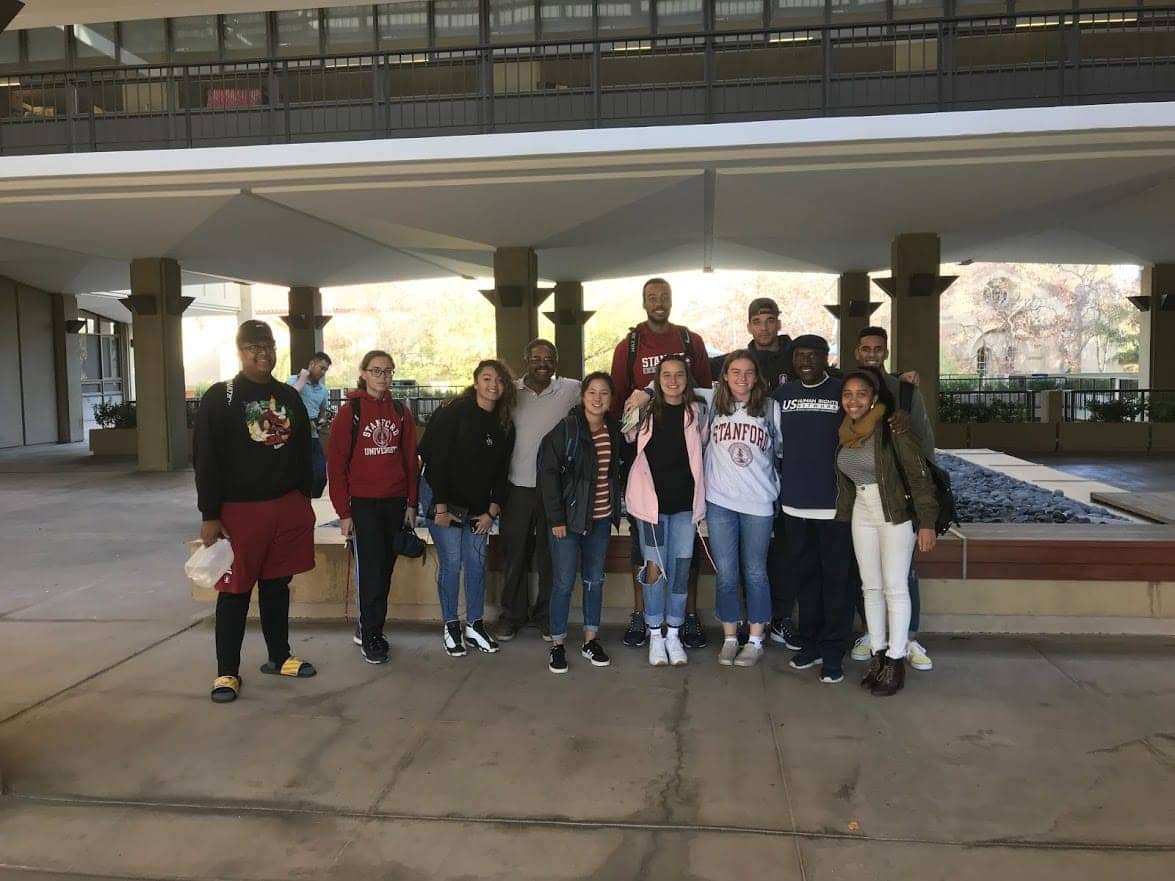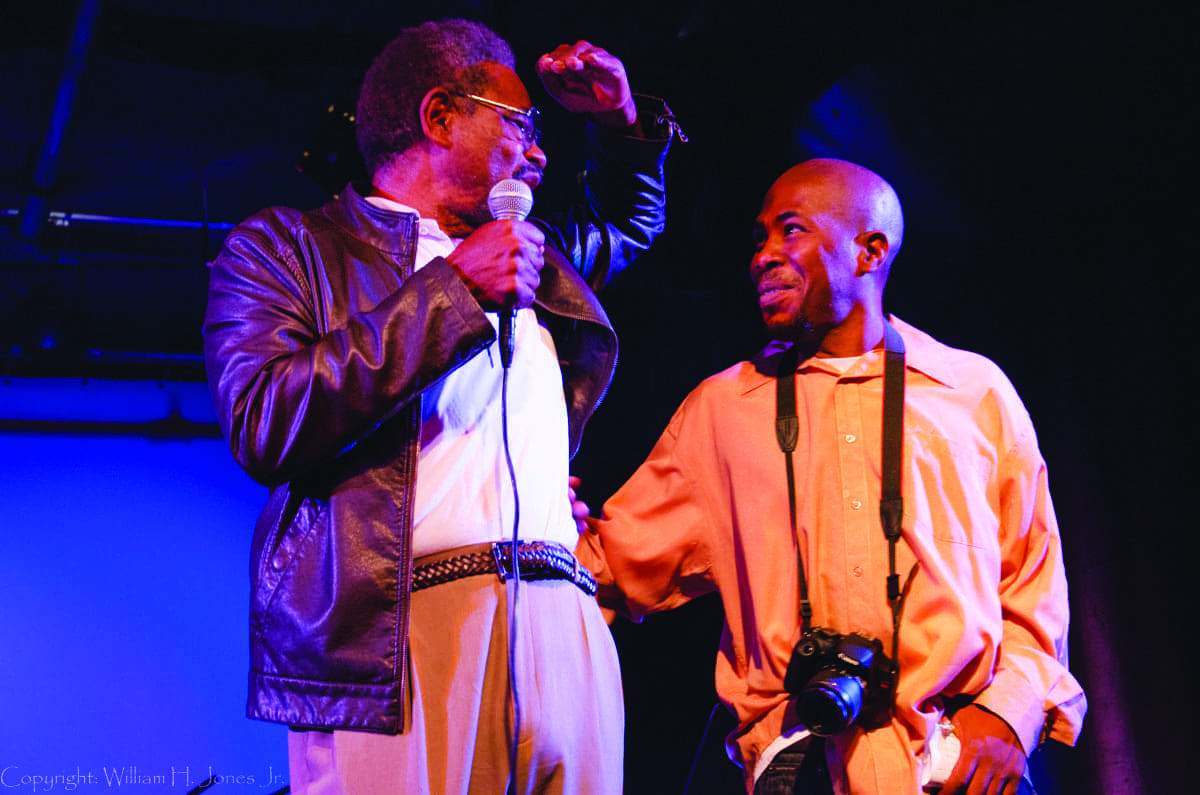
Black Congresswoman Jahana Hayes Zoombombed during town hall
by Cecil Brown, Director of the George Moses Horton Project at Stanford University
“(Who’s zoomin’ who?) now the fish jumped off the hook.” – Aretha Franklin, “Who’s Zooming Who?” (1985)
Part I: Zoom and police brutality
When the coronavirus hit back in early spring and college classes closed, students and professors took to Zoom, the video conferencing app, to continue classes. When it was dangerous for workers to come into the office, employers resorted to Zoom to complete their inventories. Zoom had obvious benefits for communicating, like saving money on travel and other expenses.
But it had negative effects, too, especially for Black Americans. A group of African American students at the University of Texas at Austin found that their virtual meeting was bombed when a visitor logged in and began pestering them with racial slurs. One reporter recently observed that “Zoombombing” against Blacks has emerged nationwide.
Zoom has proved to be a lifesaver in education, but for Blacks, it is still a way for whites to keep their knees on our collective necks. From university professors to kindergarten teachers, Zoom technology threatens African Americans.
Zoomboomers have interrupted meetings with African Americans with porn, racists insults and the N-word, but the example of the teacher calling the police on a young 12-year-old boy for holding a toy gun in a virtual classroom is the most egregious: “A 12-year-old boy in Colorado got a five-day suspension for flashing a toy gun across his computer screen during an online art class, according to a report.”
According to the report, the teacher called the police in spite of knowing the child was holding a toy gun. The police arrived unannounced to the home of the boy and suspended him from school for five days. The police arrived unannounced – just as they did at Breonna Taylor’s door – with a “no-knock” warrant.
“It was really frightening and upsetting for me as a parent, especially as the parent of an African American young boy, given what’s going on in our country right now,” said Curtis Elliott, Isaiah’s father. He said his son, who has been diagnosed with attention deficit hyperactivity disorder (ADHD) and has learning disabilities, wasn’t aware the gun was shown on screen during his distance learning.
When the white teacher saw a toy gun, she forgot that this was not a classroom situation. This is a picture of his own home.
“He was in tears when the cops came. He was just in tears. He was scared. We all were scared. I literally was scared for his life,” said Curtis Elliott. “The virtual setting is not the same as the school setting. He did not take the toy gun to school. He’s in the comfort of his own home. It’s a toy.”
The father said that his son did not understand that the computer screen showed more of his setting than it appeared.
His teacher overreacted when she saw the image of a Black boy with a gun – yet, when Kyle Rittenhouse, a 17-year-old white adolescent, killed two people in Kenosha, Wis., several weeks ago, he walked past the police without being stopped. In the eyes of police, a white boy with an AR-15 is not a threat.
“Everyone was yelling, ‘That’s the shooter!’” Jeremiah, a young Black man yelled. “And the police just let him pass.”
David Beth, the Kenosha sheriff, has said the officers in the squad cars and armored vehicles Rittenhouse approached with his hands up likely didn’t understand the shouts of the crowd due to the noise and chaos.
But in the eyes of a white teacher, just the image of a Black person with an image of a gun is a threat to the “safety” of the white community.
What is missing is the ability to do the most human thing: To look somebody in the eye.
The racism is in our head and in our history.
One of the commentators asked: “Does [the] state assume that if you use a technology like Zoom you can be considered a target, giving them the right to come into your house and, as in the case of other Blacks who have been killed, commit sanctioned and legal harm?”
One scholar, Adam Lerner, in “Understanding Video Conferencing (Zoom et al.) through McLuhans’ Laws of Media,” has made the point that Zoom leaves out an important aspect of communication – face-to-face communication. Zoom has replaced the face-to-face meeting.
This is devastating for African Americans. The 12-year-old boy’s mother, Dani Elliott, said she wished the teacher had reasoned with them before condemning the boy. There was no face-to-face communication between her and the parents – even the copy of the learning session was held from the parents.
Reports said the school district, the Widefield District No. 3, refused to give the Elliott family the recording of the online class, but authorities showed the family a video of the class from a recording by a police body camera.
The boy’s mother said the punishment didn’t fit the crime: “For them to go as extreme as suspending him for five days, sending the police out, having the police threaten to press charges against him because they want to compare the virtual environment to the actual in-school environment is insane.”
Essentially, what is left out is what Marshall McLuhan called “social interface,” a concept from his studies of the sociology of technology. “A social interface” is defined by researcher Norman Long as “a critical point of intersection between different lifeworlds, social fields or levels of social organization.”
Professor Erving Goffman writes in “Interaction Ritual: Essays on Face-to-Face Behavior” (1967) that “face” is “the positive social value a person effectively claims for himself by the line others assume he has taken during a particular contact.”
As humans, we learn how to “read faces,” how to “save face” and even how to “break” them. We are constantly reading each other’s faces for non-verbal clues to the truth behind our expressions.
The problem with Zoom, according to Steve Blank and Marshal McLuhan, is that the technology leaves out the face, and therefore all “non-verbal cues.”
“Most importantly,” Blank revealed, “We communicate through non-verbal cues. In conversation we focus on their facial expressions and their tone of voice. We make eye contact and notice whether they do. And we are constantly following their body language – posture, body orientation, how they stand or sit, etc. In video conferencing, all of these non-verbal cues are lost.”
In the essay “What’s Missing From Zoom Reminds Us What it Means to be Human,” Steve Blank is absolutely correct in assessing what is missing. What is missing is the ability to do the most human thing: To look somebody in the eye.
“But video conferencing apps just offer a fixed gaze from one camera. Everyone is relegated to a one-dimensional square on the screen,” he writes. “It’s the equivalent of having your head in a vise, having been wheeled into a meeting wearing blinders while tied to a chair.”

A Canadian, Mr. McLuhan led a group of scholars whose work ended up making an impact on American culture. He was a part of the Toronto School of Communication Theory, which included Eric Havelock, Northrop Frye, Edmund Carpenter, Harold Innis and Walter J. Ong, where they produced insights into the study of “new media” like television, radio and the telephone.
Marshall McLuhan developed a set of tools by which to judge new technologies such as Zoom. He developed a method which he called “the laws of media.”
Published posthumously – in 1988 by his son Eric – “Four Laws of Media” (1988) is one of the most useful methods to understanding electronic media like Facebook, Twitter and Zoom.
McLuhan hypothesized that there are four questions that must be asked of any new medium, each question corresponding to the particular law. The first question is Enhancement: What does it enhance or amplify in the culture? The second question, Obsoleteness, is what does it make obsolete or push out of prominence? The third question is Retrieval: What does it retrieve from the past? And the fourth question is Reverse into: What does the medium reverse or flip into when it reaches the limits of its potential?
Part 2: Reversal of media determinism, or how Zoom flips into the digital arts
“I put a spell on you!
I put a spell on you
Because you are mine
You better stop the tings you do
I tell ya I ain’t lying!”
– Screamin’ Jay Hawkins, “I Put a Spell on You” (1956)
My serious criticism of Zoom technology is its determinism. We must look to Zoom not as a tool that determines our destiny, but as a tool that we can use to alter our future.
Here is an example of such altering from my Urban Studies class at Stanford University. Instead of the standard approach to teaching about gentrification – of lecturing to my students from a list of books that I had assigned to them – I decided to take them to Oakland in pods of three or four students, 16 total. We meet with people, interview them and post them on our website.
I dispensed with books and articles. Instead of doing readings, I contacted Oakland authors and had my students interview them. The students used Zoom as a device to record and distribute research online. The authors were delighted to be interviewed and to have their stories read and uploaded online. In addition, we connected our iPads to virtual and augmented reality apps and uploaded the results to our website.
It was an exciting adventure because it was “risky.” It was “risky” because taking students anywhere out of the portals of the university could result in an accident, and who would be responsible? In order to finance it, I had to fill out a form that gave the students enough money for the toll and car fare.
Zoombombers posted messages in the chat such as “SHUT UP N****R, GO PICK YOUR COTTON” and “TRUMP 2020.”
Yet, for all the “risk,” the students wanted to do it. The “risk” is what turned them on. Four of my students were athletes. Except for their games, they had never been off campus – had never been to Oakland. They wanted to walk in the footsteps of people who lived in the streets and visit blues clubs that gentrification had morphed into rock clubs where you could brag about your tattoos, bring your dog and feed him chicken bones – as opposed to when it was a blues club where you could eat barbecue and slow dance.
They wanted to talk to people behind the White Horse, the oldest queer bar in the U.S.
Students wanted to listen to people who actually witnessed the killing of Lovelle Mixon, the Black man who gunned down four policemen one afternoon before he himself was killed. They loved strolling in the neighborhood park called Bushrod, started by the Black Panther Party, and seeing how it is now. They loved making hip hop songs while meandering down Oakland’s side streets. We enjoyed uploading our interviews and songs to our Urban Hipster website.
A few days ago, I received an email from one of those students from that class:
“Hey Dr. Brown!
“Thanks for reaching out, it has been a while! Hope you’ve been well with everything going on in the world. As it turns out, I actually graduated [from Stanford] this past June, and I’ve since left the Bay Area and moved back down to Southern California to wait out the rest of the pandemic. In that regard, I don’t know how much help I could be with future iterations of the class; but to speak from experience, I definitely enjoyed the opportunity of being able to walk around Oakland collecting stories for the podcasts we created.
“Sorry for any inconvenience! Let me know if I can be of any more help. Great to hear from you, Dr. Brown! Hope you continue staying safe and taking care!
“All the best, J.S.”
So how was the department accepting all this acoustic class?
In our face-to-face meeting, Professor ______ begrudgingly said my class was “interesting.” I can’t use his real name, but let me put it this way: When you look at his face, you will immediately switch to Zoom and be thankful that God didn’t give his face to you!
In our last face-to-face meeting, I asked him if he ever sent in the request for the students to get carfare. He glanced away and looked down at his shoe. If I had the meeting on Zoom, I would have missed his straight face. I would have missed his look that told me he was not being open with me.
Because we were face-to-face, I was able to detect the truth behind his fidgeting and other revealing non-verbal gestures. On Zoom, I would have missed the look on his face as he looked at his shoe, telling me that he had taken his class to St. Petersburg, Russia. Thank God we were not Zooming. He might have Zoomed me with a Russian background.
On a Zoom call, it would have been easier for him to tell me that while I took my class to Oakland, he had taken his class to St. Petersburg! He said all with a straight face – but his hands and side-glancing eyes told another story.
Of course, he can take his class to St. Petersburg, where the university pays for students, while I can’t take my students to Oakland. But then again, I would have missed the pleasure of knowing what kind of person he is. As expected, to save face, he had to pretend he forgot to sign the release that would give my students enough money to take BART to Oakland. The social inequity is illustrated by the fact that some of my students drove their Land Rovers to Oakland, while others, like my student from Harlem, asked me for carfare.
As Aretha said: “Who’s zoomin’ who?”
Postscript
After writing this article, “Why Zooming is bad for Black people,” I was surprised that the issue has not gone away.
On Oct. 14, I turned on CNN to hear Don Lemon interview Jahana Hayes, a Black congresswoman, about having her virtual town hall meeting interrupted by racist Zoombombers.

She said that during her town meeting this week, she was disrupted by Zoombombers who posted messages in the chat such as “SHUT UP N****R, GO PICK YOUR COTTON” and “TRUMP 2020.”
Rep. Jahana Hayes, a Connecticut Democrat up for reelection this November, said the incident happened on Monday during a virtual “listening session” with Newtown residents.
Don Lemon cut to the televised clip of the incident. “We were 10 minutes into the fourth meeting when someone said: ‘Shut up, N-word,’ according to Hayes. “I pause – not sure how to react, but I catch a glimpse of all the faces of the people who have joined the meeting. They are mortified, shocked, embarrassed, hurt and I could tell they didn’t know what to do next,” she later wrote and posted to Medium. (Learn more at “Racist trolls Zoombombed a virtual campaign event held by Jahana Hayes, Connecticut’s first Black congresswoman“ in the New York Times.)
Novelist and educator Cecil Brown, senior lecturer in urban studies and director of The George Moses Horton Project at Stanford University, is best known as the close friend, screenwriter and biographer of Richard Pryor and as the author of “The Life and Loves of Mr. Jiveass Nigger,” “Stagolee Shot Billy” and most recently “Pryor Lives: How Richard Pryor Became Richard Pryor: Kiss My Rich Happy Black Ass.” Brown can be reached at browncecil8@me.com.





